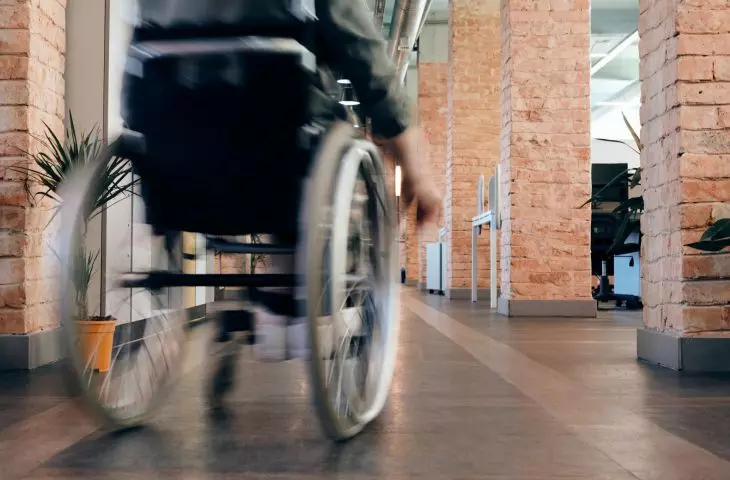The 1st edition of the Accessibility Forum (Forum Dostępności) — an event organized by Nowy Adres and the Integration Foundation and dedicated to universal design, architectural accessibility and the challenges of legal and social changes, as well as the directions of architecture and product design — will begin in Poznań on November 13. We talk to Kamil Kowalski, interior architect, accessibility designer and director of Integracja LAB, a research center and competence center in the field of disability, about how the approach to universal design has changed in recent years, new aspects to consider when creating barrier-free spaces, and whether aesthetics are part of accessibility.
Kamil Kowalski
© Fundacja Integracja
Ola Kloc: What does education on inclusive design look like at universities now? Do architects want to educate themselves in this field?
Kamil Kowalski: The topic of inclusive design at universities, for example at the Faculty of Architecture at the Warsaw University of Technology, has been around for many years. However, these were isolated situations. At the moment, many more universities are dealing with this topic. Often these are classes that talk about basic issues, which later in the course of a professional career must be developed. However, we are observing the changes this is causing in the market. For many architects of the younger generation, the topic of universal design is important. They often find their way in it, exploring specific areas, for example, designing for people on the autism spectrum. This definitely changes the sensibility of the new generation of designers.
As for architects already on the market, it works similarly to other professions. There are those who want to keep broadening their horizons and those who are content with the knowledge they gained in college. So this does not only apply to the problem of universal design. I think it is the former group that has the best chance of success.
Ola: Are the accessibility solutions used in architecture today sufficient?
Kamil: We will never be able to say that they are sufficient. In the 1990s, Polish building regulations suggested that accessibility was mainly for people in wheelchairs. Back then, we could live in the belief that building enough ramps, elevators and toilets would allow us to ensure full accessibility of architecture. For a dozen years or so, we have been saying that this is not enough, that the problem of accessibility affects people with visual and hearing disabilities, parents with children, the elderly. In recent years, there has been more emphasis on people with intellectual disabilities, on the autism spectrum.
Most likely, we are still unaware of many things. The history of architecture shows that despite our best intentions we have made mistakes, so we certainly continue to do so. Social conditions are changing (for example, demographic changes). New technological solutions are emerging. I think that in 10 years we will define accessibility completely differently. This process will never end.
Ola: It has been said for some time that the topic of accessibility in architecture is already the norm. In your opinion, is this a true statement?
Kamil: Certainly, accessibility is a much more common topic than it was 10–20 years ago. For some architects, it is the norm. Some architects defend themselves against it, fearing, among other things, that accessibility interferes too much with their understanding of aesthetics. I am a designer myself, and I understand these fears well. However, I think the key to letting go of these fears is to understand that aesthetics is also part of accessibility. At the end of the day, it's not just about being able to just walk into a building, it's about enjoying being in it.
Ola: You have conducted more than 1,500 accessibility audits of various facilities, including public ones — what mistakes have you encountered most often?
Kamil: Until 10–15 years ago, a common problem was treating regulations as suggestions. If a ramp didn't fit, it was made 2-3 times steeper than the regulations suggest, and no one cared too much about it. So the problem was the implementation of even the most basic things under the law. With these problems, we often stayed in older buildings.
Now the problems are different. They concern new problems and issues raised in architecture, for example, accessibility for people with visual or hearing disabilities. These are often new topics for architects. We still don't know everything and make mistakes as a result. We are learning to use new technologies and solutions. One of the new problems is redundancy. He observes it in information, for example. Sometimes we want to be so accessible that we introduce all possible solutions in buildings, but we forget that an excess of information makes it difficult to notice what is really important.
Ola: Thank you for the interview.
The Accessibility Forum (Forum Dostępności) will be held on November 13-14 at the Poznań Congress Center. The debates during the event will include evacuation of people with reduced mobility, accessibility in residential and hotel facilities, shopping centers and banks, universal design in kindergartens, nurseries and schools, accessibility in product design and computer games. A detailed program of the event and additional information are available at: forumdostepnosci.com.pl


















